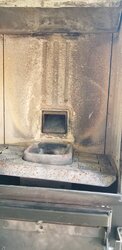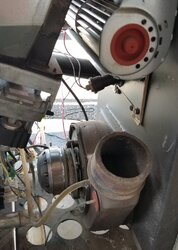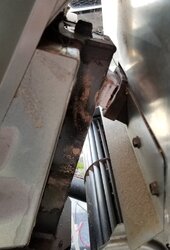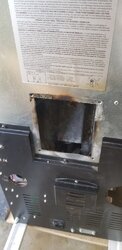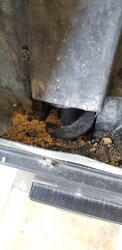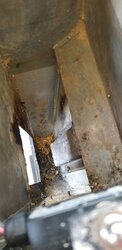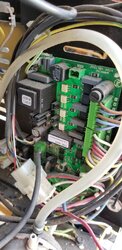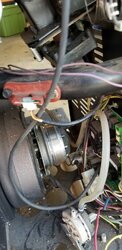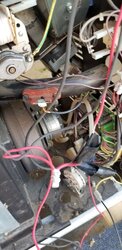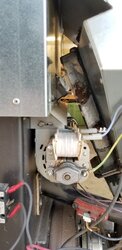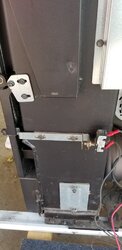First time poster, long time lurker. I'm a 15 year pellet burner with a Lopi Yankee Bay fireplace insert. Over the years I've done all the basics on that stove, maintain and clean it religiously, troubleshoot and replace parts as needed w/much help from the forums. Wanted to pick up a second stove this year to further supplement my outrageously ridiculous electric rates in CT, at the beginning of the pandemic when I started to work from home in March my electric heat usage for my home office, wife's home office, two kids remote "school rooms" went through the roof.
I came across and picked up a 2016 Ravelli Francesca on FB Marketplace for $500. The seller was totally honest about the issues from the 2020 heating season, is moving, and not planning on reinstalling the stove . HE had a tremendous amount of aggravation w/the dealer when trying to identify the issues and quite frankly just wanted to move on from the stove.
Long story short, after the hopper fire some work had been done on the stove by a dealer, they replaced the exhaust blower not 100% sure they ever found the root cause of the hopper fire as the former owner got frustrated w/the tech and fees they were trying to charge him.
As the story often goes w/hopper fires, it was a pellet backup into the hopper that lingered, stove never shut down, smoke in the house, etc etc. Only change the former owner had noted was that he had just switched to softwood pellets, I myself have always burned hardwood.
There's some obvious areas we all look with hopper fires but I wanted to do a deeper dive on the stove, "recommission" it as safe, before I consider installing it in my house. And yeah there's a pandemic going on so I'm looking for some projects
I've started to look for additional documentation on the stove other than what was provided to me, plan on taking and posting pics of the tear down, clean up, troubleshooting and testing etc. Have already eyeballed a bunch of obvious issues; loose connections, loose convection blower which is missing screws, loose door contact, missing gaskets on the hopper access door, etc.
I need to locate a parts list/schematic so I can verify what I am eyeballing as the safety's that should have shut the stove down, and attempt to fire it up outside and trouble shoot the startup/running sequences, simulate some failures on the appropriate contact points to identify a root cause.
Been browsing the forums for a few days leading up to this post, have some good ideas on how to approach this, but would love some feedback from forum pros on how they would approach this little pandemic project.
I came across and picked up a 2016 Ravelli Francesca on FB Marketplace for $500. The seller was totally honest about the issues from the 2020 heating season, is moving, and not planning on reinstalling the stove . HE had a tremendous amount of aggravation w/the dealer when trying to identify the issues and quite frankly just wanted to move on from the stove.
Long story short, after the hopper fire some work had been done on the stove by a dealer, they replaced the exhaust blower not 100% sure they ever found the root cause of the hopper fire as the former owner got frustrated w/the tech and fees they were trying to charge him.
As the story often goes w/hopper fires, it was a pellet backup into the hopper that lingered, stove never shut down, smoke in the house, etc etc. Only change the former owner had noted was that he had just switched to softwood pellets, I myself have always burned hardwood.
There's some obvious areas we all look with hopper fires but I wanted to do a deeper dive on the stove, "recommission" it as safe, before I consider installing it in my house. And yeah there's a pandemic going on so I'm looking for some projects
I've started to look for additional documentation on the stove other than what was provided to me, plan on taking and posting pics of the tear down, clean up, troubleshooting and testing etc. Have already eyeballed a bunch of obvious issues; loose connections, loose convection blower which is missing screws, loose door contact, missing gaskets on the hopper access door, etc.
I need to locate a parts list/schematic so I can verify what I am eyeballing as the safety's that should have shut the stove down, and attempt to fire it up outside and trouble shoot the startup/running sequences, simulate some failures on the appropriate contact points to identify a root cause.
Been browsing the forums for a few days leading up to this post, have some good ideas on how to approach this, but would love some feedback from forum pros on how they would approach this little pandemic project.


